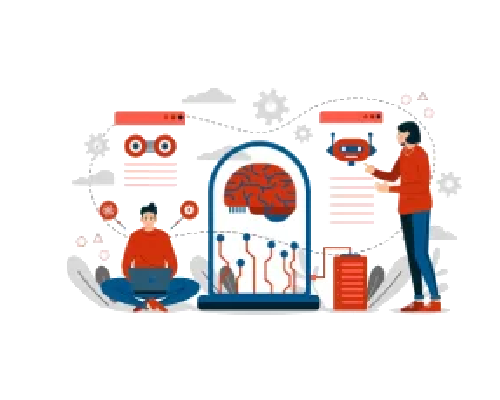“The first rule of any technology used in a business is that automation applied to an efficient operation will magnify the efficiency. The second is that automation applied to an inefficient operation will magnify the inefficiency.” – Bill Gates has famously said about automation.
With emerging technology like Robotics Process Automation (RPA), it’s true that the beauty lies in leveraging it correctly. To truly empower organizations in using intelligent automation, technologies like artificial intelligence, machine learning and neuro-linguistic programming have become a force multiplier when used with RPA. Deep learning and cognitive technologies have already started transforming rule-based automation with decision making abilities. This Intelligent Process Automation (IPA) heralds a new era of enhanced efficiency, reduced operational risks and faster cycle times. But how do these technologies work together?
Impact of Machine Learning and Artificial Intelligence on RPA
Machine learning or ML is just a subset of AI that can process data and learn by using pattern recognition in vast data sets on its own, without human intervention. Computer systems with the help of ML use complex and large datasets to recognize patterns and make decisions. They transform this data into knowledge. One easy example of this is how Spotify or Netflix may use ML to curate a weekly playlist or recommendations of the content you are likely to consume.
When RPA services are augmented with ML, it allows automation of tasks using cognitive efforts and error correction. This is because RPA is simply an execution of programming. When requirements change, the bots need to be reprogrammed. Since machine learning is more dynamic, organizations can allow RPA to clean and feed data into an ML algorithm. This can help achieve a fully automation solution.
ML + RPA Use cases: Chatbots
One example of combining RPA solutions and machine learning is to use RPA and ML-powered chatbots. These bots can not only fulfil the online retail tasks but improve the overall customer experience. They do this by performing complex actions such as increasing order quantity, updating the delivery date etc., based on customer input. This collaboration between RPA and ML vastly improves the customer journey resulting in increased business performance and revenue.
Another application of machine learning and RPA implementation is with the use of computer vision. Genpact, a global IT services company leverages computer vision to boost their RPA and make it more extensible. They used RPA services in conjunction with ML and computer vision to discover and mine business processes, their deviations and variations. They also used ML to examine RPA engine log files to find the root cause of issues that needed to be resolved in RPA.
AI integration with RPA
Since RPA works best with structured data, AI helps gather insights from unstructured or semi-structured data from multiple sources such as texts, documents, PDFs, web pages etc. When RPA is powered with AI, it gives a business immense opportunity to deal with high-volume data. This leads to highly automated and data-led operations, substituting human intervention to manage bots and process unstructured data. This means teams can be freed up to take business decisions rather than perform boring, repetitive tasks.
For example, AI and RPA combined can use task and process mining capabilities to uncover automation potential across the enterprise. Organizations can train robots with the skills needed to process documents, recognize dynamic UI and make complex decisions. The other advantage of using AI in RPA is improved accuracy thanks to continuous learning from new data.
AI and RPA Use case: Credit and risk management
As credit banking is being used more than before, AI in RPA is useful to make complex credit decisions. There is now an overwhelming amount of work for financial institutions to go through because creditors have to process a large number of new customer requests. Assessing all the new requests is impossible to carry out manually. Creditors not only want to speed up the evaluation process to maximize their approvals, they also want to reduce risky operations and the likelihood of offering credit to potential defaulters.
AI is now being used to accelerate the credit approvals process and eliminate the risks associated with credit lending by combining it with RPA. AI can do a demographic analysis of multiple data points that have no direct relevance to a person’s credit but when combined provide unprecedented insights about the borrowers. When combing through hundreds of thousands of profiles, the tool can produce predictive analyses that help reduce the risks of bad approvals and increase the efficiency of overall credit management.
Smarter NLP with RPA
Neuro Linguistic Programming (NLP) uses text analytics functions to break down phrases in specific parts. This includes verbal speech too. NLP decodes the meaning of these specific parts, analyzes its sentiment and classifies the message that is being conveyed.
NLP in RPA helps analyze structured, unstructured or semi-structured data and extract it for deeper analysis. For example, using NLP for email automation and chatbot automation. NLP can also be used in RPA to optimize the recruitment process by using the NLP engine to screen the resumes and analyze text in some fields to match with the job description.
NLP in RPA use case: Automating invoice processing
Using an Optical Character Reader (OCR) engine with NLP can decode and categorize documents. This solution enables the automatic scanning of documents, data extraction and input into another system. Leveraging AI, errors can be identified and necessary steps can be taken.
Banking on the promise of emerging tech in RPA
With time, NLP, AI and ML are gaining faster adoption to make RPA solutions truly an intelligent automation solution. Ultimately, the right combination of automation technologies can help enterprises scale up their operations, minimize errors and risks and lead to increased ROI. This will empower businesses to tackle a new set of RPA use cases and provide higher value to their customers.




